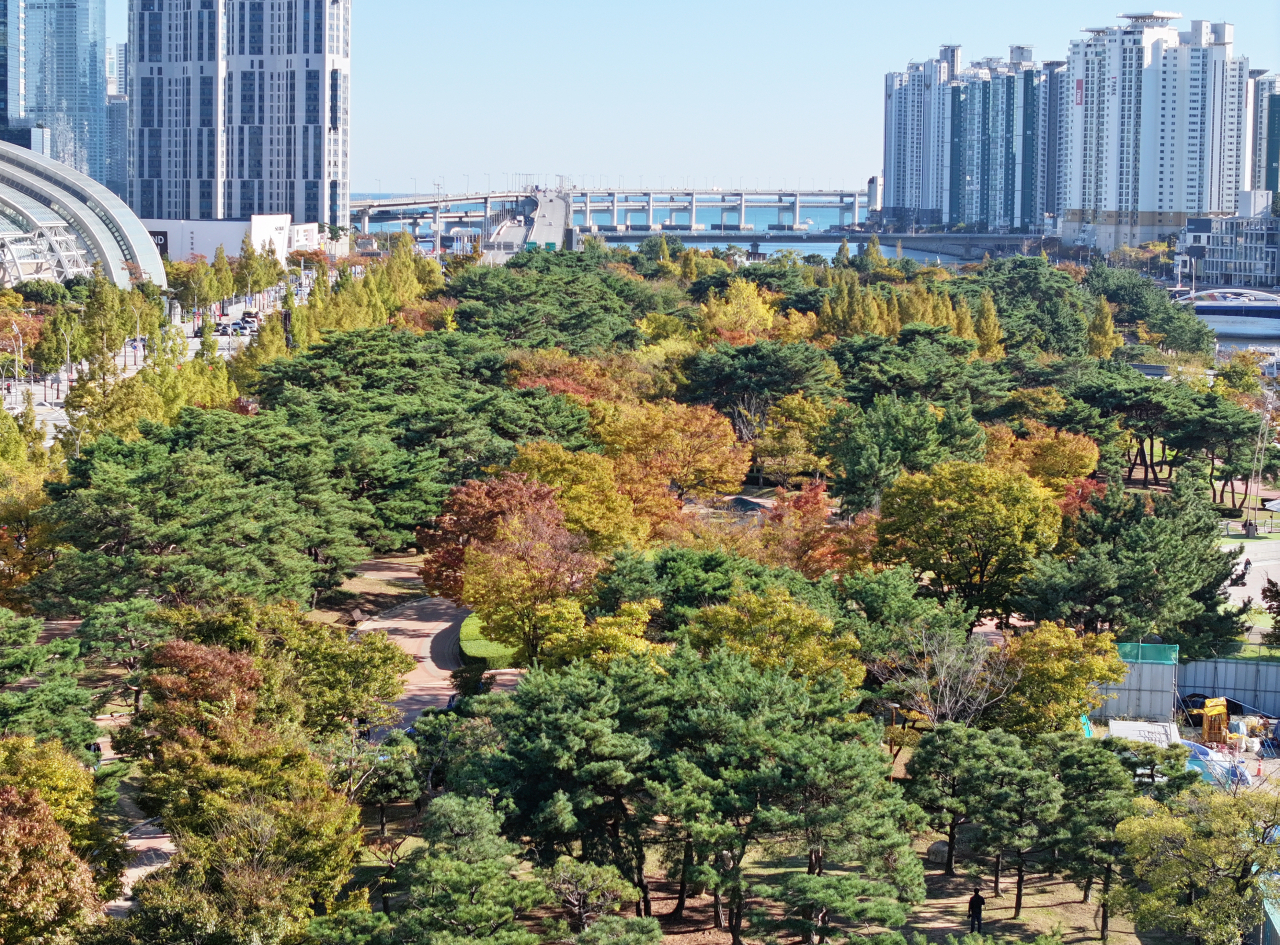
 |
| Green and red leaves are spotted together at APEC Naru Park in Busan on Nov. 6. Fall leaves were recorded later this year compared to previous years, as the beginning of the fall foliage is usually recorded on Nov. 2 in the city. (Yonhap) |
Though fall has officially arrived in South Korea, this year’s foliage season was observed later than usual due to unprecedented high temperatures, resulting in less vibrant fall colors across the country.
According to the Korea Meteorological Administration’s monitoring report of 21 prominent mountains nationwide, nearly half the mountains saw peak fall colors later than usual this year. The KMA declares the “beginning” of foliage when 20 percent of the leaves on a mountain turn to fall colors, while the “peak” is declared when 80 percent of the leaves change color.
For example, Naejangsan, which stretches across the border of the Jeolla Provinces, saw the beginning of fall foliage on Oct. 31, 11 days later than the previous year’s records. Naejangsan recorded peak fall colors Monday, 14 days later than 2023’s records.
Woraksan in the central region also saw the start of fall foliage on Oct. 21 and reached its peak on Nov. 5. According to the KMA’s records, the foliage here began nine days later than average, peaking 12 days later.
As of Tuesday, 20 out of 21 prominent mountains have recorded peak fall colors. Hallasan in Jeju Island has yet to see its peak fall colors since the beginning of its fall foliage on Oct. 29 -- also 19 days later compared to previous records.
Normally, in the central parts of the country, leaves show peak fall colors between mid-October and early November, while in southern parts of the country, peak fall colors are observed from late October to mid-November. According to this trend, peak fall colors are now being observed at the end of the average foliage window.
According to Professor Yun Sun-jin from Seoul National University’s Department of Environmental Planning, the reason behind the late fall foliage this year is due to “unprecedented high temperatures that were observed throughout the year.”
“Fall leaves usually show a hue in fall colors due to the breakdown of chlorophyll in the leaves,” explained Yun. “As the weather gets colder and sunlight hours decrease, photosynthesis becomes less active and chlorophyll production decreases. As temperatures begin to drop, trees stop nutrients and water from entering the leaves to prepare for winter and the leaves start to change color as chlorophyll begins to break down. The colder the temperature, the more vibrant the colors get.”
However, this year, every month from January to October was recorded to be hotter than previous years, according to the KMA. Summer temperatures continued into mid-September, as the last heat wave warning was observed on Sept. 19.
With record-breaking high temperatures expected to persist due to global warming, Yun also told The Korea Herald that the late fall foliage could become “the new normal.”
“Climate change and warm temperatures that come with it are pushing back what’s considered a ‘normal time’ for fall foliage to be observed,” explained Yun. “Extreme climate conditions can bring stress to the trees and disrupt the production of chemicals that allow leaves to produce fall foliage colors, therefore reducing the intensity of fall foliage in the long run.”









